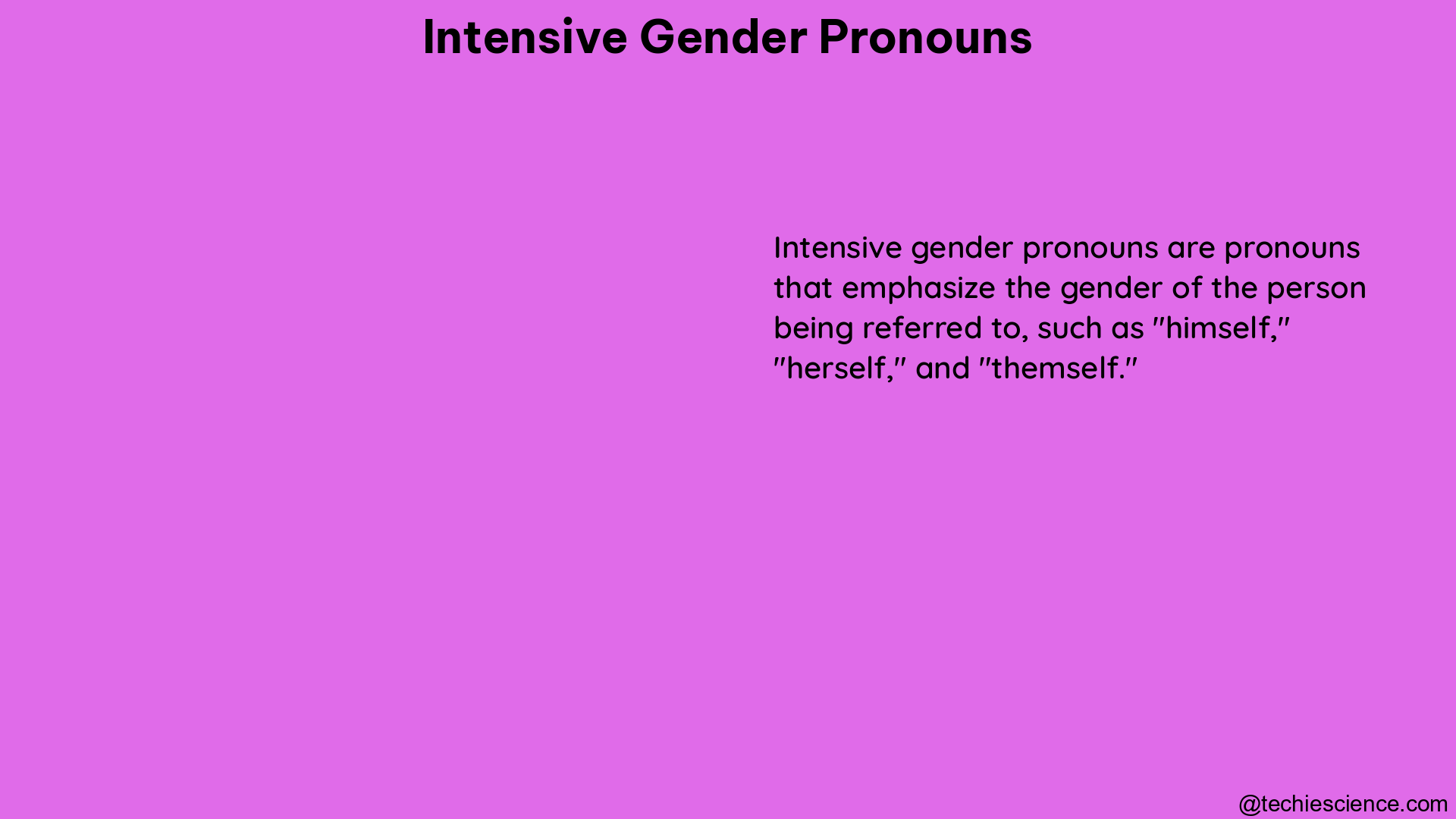Intensive gender pronouns are a crucial aspect of English grammar that emphasize a noun or pronoun in a sentence. These pronouns, which always end in “-self” or “-selves,” play a vital role in providing emphasis and clarity in our communication. In this comprehensive guide, we will delve into the intricacies of intensive gender pronouns, exploring their grammatical specifications, the difference between intensive and reflexive pronouns, and the importance of using correct pronouns in respectful communication.
Understanding Intensive Gender Pronouns
Intensive gender pronouns are a type of pronoun that emphasizes another noun or pronoun in a sentence. These pronouns are used to place special emphasis on the subject or object they refer to, adding a layer of emphasis and clarity to the statement. The intensive gender pronouns in English are:
- myself
- ourselves
- yourself
- yourselves
- himself
- herself
- itself
- themselves
- oneself
Examples of Intensive Pronouns in Use
- I myself wrote the code.
- She herself made the decision.
- They themselves will handle the project.
In these examples, the intensive pronouns “myself,” “herself,” and “themselves” are used to emphasize the subjects “I,” “She,” and “They,” respectively.
Grammatical Specification of Intensive Gender Pronouns

Intensive pronouns are used in combination with a noun or another pronoun to provide emphasis. They cannot stand alone as a subject or object in a sentence. The placement of the intensive pronoun can vary, but it typically appears directly after the antecedent (the noun or pronoun it refers to). Occasionally, it can appear before the antecedent, separated by a comma, but this is less common and may read less smoothly.
Here are some key points about the grammatical specification of intensive gender pronouns:
- Emphasis: Intensive pronouns are used to emphasize the noun or pronoun they refer to, adding a layer of emphasis and clarity to the statement.
- Placement: The intensive pronoun is typically placed directly after the antecedent it refers to, but it can also appear before the antecedent, separated by a comma.
- Standalone Usage: Intensive pronouns cannot stand alone as a subject or object in a sentence; they must be used in combination with another noun or pronoun.
- Identical to Reflexive Pronouns: Intensive pronouns are identical in form to reflexive pronouns, but they have different grammatical functions.
Difference between Intensive and Reflexive Pronouns
Intensive pronouns and reflexive pronouns may appear similar, but they serve different grammatical functions. Reflexive pronouns are used as the object of a transitive verb when the subject and object are the same person or thing. In contrast, intensive pronouns are used to emphasize the noun or pronoun they refer to, providing additional emphasis and clarity to the statement.
Here’s an example to illustrate the difference:
- “I believe in myself.” (Reflexive pronoun)
- “I myself wrote the code.” (Intensive pronoun)
In the first example, “myself” is used as a reflexive pronoun, as the subject “I” and the object “myself” are the same. In the second example, “myself” is used as an intensive pronoun to emphasize the subject “I.”
Importance of Using Correct Pronouns
Using correct pronouns, including intensive gender pronouns, is crucial for respectful communication, especially for individuals whose gender identity does not align with their sex assigned at birth or whose gender identity or expression does not fit into binary constructs. Misgendering (using the wrong pronouns) can be hurtful and invalidating, and intentional refusal to use someone’s correct pronouns is considered harassment and a violation of civil rights.
It is essential to be mindful of the pronouns used when addressing or referring to individuals, and to be open to learning and using the correct pronouns for each person. Respecting someone’s pronouns is a simple yet powerful way to demonstrate empathy, understanding, and a commitment to inclusive communication.
Additional Resources
- Scribbr – Intensive Pronouns
- DPCPSI – Gender Pronouns Resource
- UWM – LGBTQ+ Resource Center – Gender Pronouns
Reference:
- Scribbr – Intensive Pronouns
- DPCPSI – Gender Pronouns Resource
- UWM – LGBTQ+ Resource Center – Gender Pronouns

Hi…..I’m a graduate with a Bachelor’s degree in English Literature. I wish to do a Masters in the same field someday and continue my career in Academia.
Let’s connect through LinkedIn: